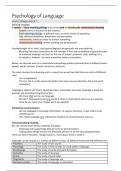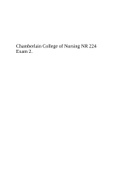Samenvatting
VOLLEDIGE samenvatting - Psychology of Language
- Instelling
- Tilburg University (UVT)
Hi! This is everything you need to learn for the Voice & Body language exam. This document is 48 pages and includes everything from the lectures (including experiments and images). Good luck!
[Meer zien]







